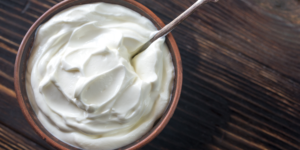Making pasta from scratch may seem intimidating, but it’s not rocket science. With the right ingredients and a few simple steps, you can make delicious, fresh pasta from the comfort of your kitchen. With the tips and guides in this article, you’ll be making pasta like a pro in no time!
Here’s how to make homemade pasta.

Ingredients
- 400 grams of Tipo 00 flour or any other soft wheat flour
- 4 large eggs (about 185g each)
- One teaspoon of salt (optional)
- Water, as required
- Flour for dusting, as required
These ingredients make 4-5 servings of pasta.

Step-by-Step Process
Whether you’re making pasta traditionally with your hands or using a pasta machine, the first three steps are common to both procedures.
Mix the dough
- Pour the flour into a bowl or rolling board and make a well at the centre. Add the salt, crack the egg into the well, and beat it with a fork until it homogenizes.
- Wash your hands (again).
- Use your fingers to mix the egg with the flour, one portion at a time, until thoroughly combined.
- Add a little water if it feels too dry.

Knead the dough
- Knead the dough until it forms a single, smooth lump. Use as much energy as you can, and add a little flour if necessary.
- You will know if your dough is ready when it no longer sticks to your fingers and starts to feel smooth.

Rest the dough
- Wrap the dough with a sheet of clingfilm, ensuring every part is covered. Leave it to rest for about thirty minutes.
Roll out the dough
- Cut the dough into small pieces about the size of your fist. If you’re using a pasta machine, follow through steps 2 to 6, but skip to step 7 if you’re using the hand method.
- One of the best pasta-making machines is the Marcato Atlas 150 Pasta Machine. It is a reliable brand that makes fettuccine, spaghetti, and lasagna pasta.

- Clamp the machine firmly to your table, then dust your work surface or rolling board with flour.
- Press a piece of the dough with your fingers until it is flat. Set the machine to its widest dimension and roll the lump of dough through it. If the dough gets sticky, sprinkle some flour on it.
- Change the setting to a dimension one step lower and roll the dough through the machine. Switch it back to the initial dimension and roll it again. Go through this back-and-forth process five more times. Doing this will make it smoother and give it a silky feel.
- Roll the dough through the machine again, using all the settings, from the widest to the narrowest. Make sure to dust both sides of the dough with flour each time you roll it through the machine.

For hand method
- Take a piece of the dough and place it on a rolling board. Dust both sides of the dough with flour and roll it with a rolling pin. You can cut the dough into smaller pieces to flatten the dough easily. Do this until you have thin, silk-like stretches of dough.
Fold the flattened piece of dough into a rectangle, cutting off excesses.
Cut the pasta
- Most pasta machines have labels on their parts indicating which blades make which pasta. Roll your pasta through your desired blade to cut it into the desired shape.
- For the hand method, shape and cut the pasta using a pastry cutter, paying attention to its thickness and size.

Dry the pasta
- As you cut your pasta, spread it out to dry. To dry your pasta strands efficiently, you can get the 8-piece Ravioli Mold Set, which contains a drying rack.

Storage and shelf life
It is best to cook homemade pasta the day it is made. However, you can prepare it ahead of time. Transfer the pasta to an airtight container and refrigerate at 40°F (4°C) for up to 12 hours. Keeping homemade pasta longer than this will lead to degradation and spoilage.
Tips
- Kneading and working your dough helps develop the gluten in the flour. This is what gives your pasta a springy texture when you cook it, as opposed to soggy and soft.
- You can use gluten-free flour like brown rice flour if you have a gluten allergy.
- Weigh your ingredients. As a rule of thumb, use one egg per gram of flour. For example, if you are working with 500 grams of wheat flour, use five eggs for your recipe.
- Pasta dries quickly. Once you roll your pasta, cut it right away. You can also lay it over a damp, clean paper towel to slow the drying.
- Spinach puree and other ingredients used to make pasta variations should be mixed with the egg before pouring the mixture into the well.
- Cooking homemade pasta is the same as cooking store-bought pasta. Add the pasta to a pot of boiling water and cook until al dente, draining the water afterwards.
Benefits of homemade pasta
Excluding the fact that you can have an “I made that” moment, making your pasta at home affords you the freedom that the store-bought versions can’t. You get to choose what ingredients to add to the mix and in what proportion. For example, you can cut back on salt or add some spices to improve its nutritional content. Making your own pasta can also benefit your savings in the long run. Moreover, you can get creative with the shapes, sizes, and flavours. You call the shots.
Conclusion
Making pasta is easy. Following this step-by-step guide makes it easier. After following this recipe a few times, you may feel free to explore and customize the ingredients. You can create your own shapes and flavours. Who knows, you may invent the best pasta yet. Happy pasta-making, and buon appetite!











